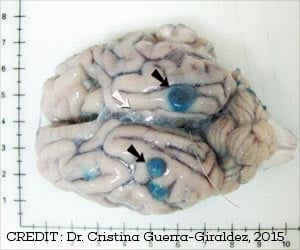A study demonstrates that low socioeconomic status independently predicts the poor acceptance of continuous...
A study in the April 1 issue of the journal SLEEP demonstrates that low socioeconomic status independently predicts the poor acceptance of continuous positive airway pressure (CPAP) therapy for obstructive sleep apnea, and patients with higher incomes are more likely to begin treatment. The authors suggest that CPAP support programs should be better tailored to the needs of low-income patients to improve CPAP acceptance and adherence.
Results show that 60 percent of patients requiring CPAP (97 of 162) declined to purchase the device. The odds of CPAP purchase for patients in the highest third of income level were 5.76 times greater than the odds of those in the lowest third of income level. For each increase in income level category, the odds for CPAP acceptance increased by 140 percent.According to principal investigator Ariel Tarasiuk, PhD, director of the Sleep-Wake Disorder Unit of Soroka University Medical Center at Ben-Gurion University of the Negev in Beer Sheva, Israel, a patient's income level is an important factor that may affect the decision either to initiate or decline CPAP treatment.
"The current study provides strong evidence that low-socioeconomic status is an additional important risk factor affecting CPAP acceptance and adherence," said Tarasiuk. "Physicians should consider that patients with low socioeconomic status have an additional risk factor for obstructive sleep apnea and are poor candidates for CPAP treatment adherence."
The study involved 162 consecutive adult patients who were newly diagnosed with obstructive sleep apnea by overnight polysomnography and who required treatment with CPAP. About two weeks after the sleep study CPAP titration was performed to determine the level of air pressure needed to eliminate breathing pauses during sleep. Patients then were encouraged to begin a two-week adaptation period to begin CPAP treatment. A CPAP support program provided patients with educational information, helpful instructions and encouragement. Four to six weeks after the adaptation period, the researchers confirmed patients' final decision to purchase CPAP or decline treatment.
Low socioeconomic status was defined as having an individual monthly income below the Israeli national average. Forty-three percent of patients who declined CPAP had a low socioeconomic status, while only 14 percent of patients who accepted CPAP had a low income.{1 of 2}
Thirty-eight percent of patients declining CPAP reported that the treatment causes side effects; 31 percent said they are interested in other treatments; 29 percent said they could not adapt to the treatment; and 29 percent said CPAP is too expensive. In Israel treatment requires an out-of-pocket payment of about 30 percent of the CPAP cost.
Advertisement
The authors report that physicians can play an important, proactive role in a patient's decision to comply with CPAP by promoting positive beliefs and expectations about CPAP before treatment is initiated. Support protocols for patients and spouses, provision of information regarding risks involved with sleep apnea, and continuous corrective feedback during treatment may improve CPAP adherence.
Advertisement
CPAP is the most common treatment for obstructive sleep apnea. It provides a steady stream of air through a mask that is worn during sleep, keeping the airway open to restore normal oxygen levels.
Source-Eurekalert
SRM















